The Super Bowl halftime show was a love letter to Compton
The 2022 Super Bowl halftime show at SoFi stadium in Los Angeles was the first time hip hop took center stage on football’s biggest night and it was an absolute hit. The ensemble show featuring hop legends Dr. Dre, Snoop Dogg, 50 Cent, Eminem, and Kendrick Lamar, as well as R&B icon Mary J. Blige, has now been viewed more than 35 million times online.
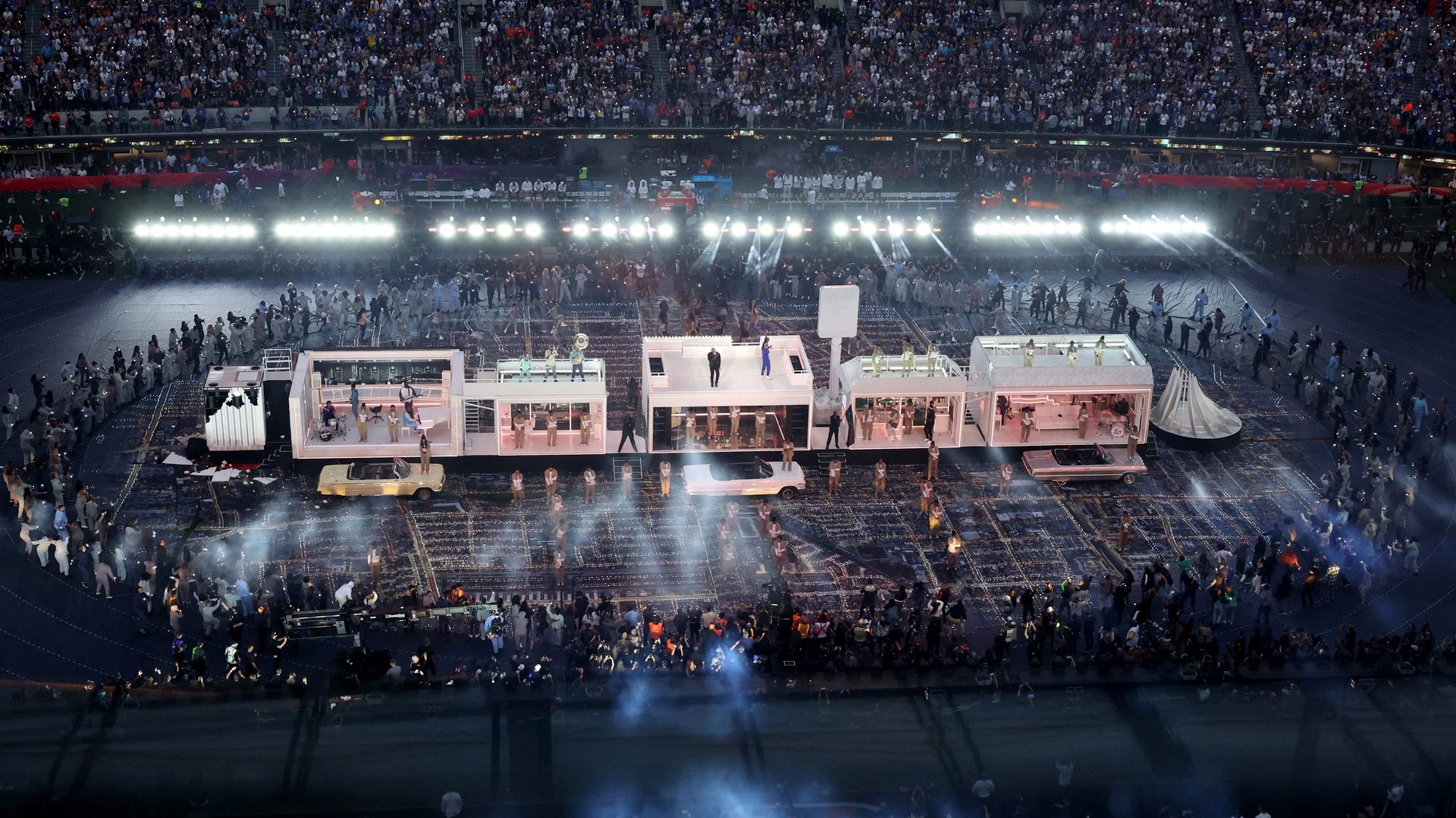

The 2022 Super Bowl halftime show at SoFi stadium in Los Angeles was the first time hip hop took center stage on football’s biggest night and it was an absolute hit. The ensemble show featuring hop legends Dr. Dre, Snoop Dogg, 50 Cent, Eminem, and Kendrick Lamar, as well as R&B icon Mary J. Blige, has now been viewed more than 35 million times online.
The performance was largely a celebration of West Coast hip hop, which Dr. Dre helped put on the map with his group NWA in the 1980s. Fittingly, the set design included iconic landmarks and imagery from Dre’s hometown of Compton, the city of 100,000 that makes up part of the South Los Angeles area where Kendrick Lamar and Snoop Dogg also grew up.
The history of Compton is the story of a Black community that has thrived despite numerous challenges. Black Americans carved out a home for themselves in southern California themselves amidst oppressive segregation and economic exclusion throughout the 20th century, and then faced escalating threats from drugs, gangs, and police violence during the 1980s and 90s.
Throughout it all, the artists found their inspiration in the urban environment of Compton: its homes, local business, and long broad avenues provided the backdrop for the stories they told in their music about navigating gang violence and police harassment. Ultimately, the work of Dr. Dre and other rappers is a celebration of Compton as a hometown that, for all its faults, raised and shaped them.
To watch the Super Bowl on Feb. 13 was to see how an American city shaped Black American art, giving rise to the LA hip hop sound that’s now celebrated the world over. Here’s a tour of the show’s imagery:
Snoop Dogg’s LA bungalow
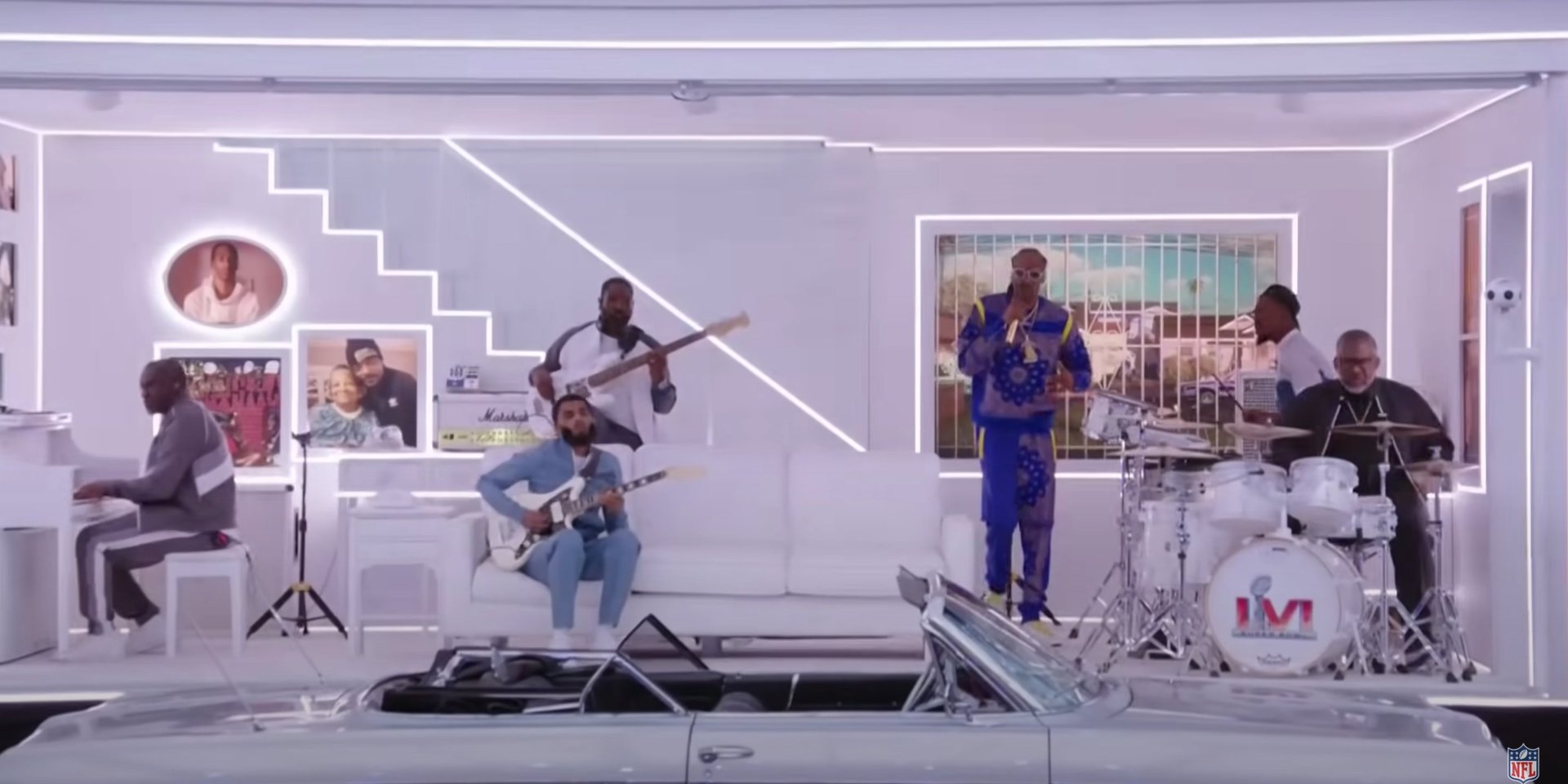
During part of his set, Snoop Dogg and his band perform sitting in the living room of a home; on the wall behind them are photos of Snoop with his mother, and a photo of young Snoop that morphs into a dog. One can easily imagine they’re in the type of modest single-family bungalow that’s common throughout Compton and the greater LA area.
In the 1950s and 60s, Black Americans began to move into these homes after racist housing covenants preventing white owners from selling to Black people were struck down by the Supreme Court. Once the first few Black families started to move in, white people fled, and the makeup of the city completely changed seemingly overnight. Here, with the prospect of good jobs and affordable housing, they began to build families and establish a Black middle class. “Compton was our suburbs,” one resident told the Los Angeles Times.
But not long after, the city entered into a period of decline. Home values went down, simply because they were owned by Black people. Job opportunities dried up with the disappearance of manufacturing plants and many small businesses that left during white flight. By 1989, less than 3.5% of households in Compton made more than $50,000 per year.
Into this vacuum of unemployment stepped the drug trade and the gun violence that accompanied it. Many families left Compton in the late 80s and 90s, depleting the tax base even further. For those who remained, Compton remained a Black enclave, albeit a more dangerous one. The bars on the “window” of the stage set house mimic the ones that can be seen on many homes in the city to deter theft.
The King memorial
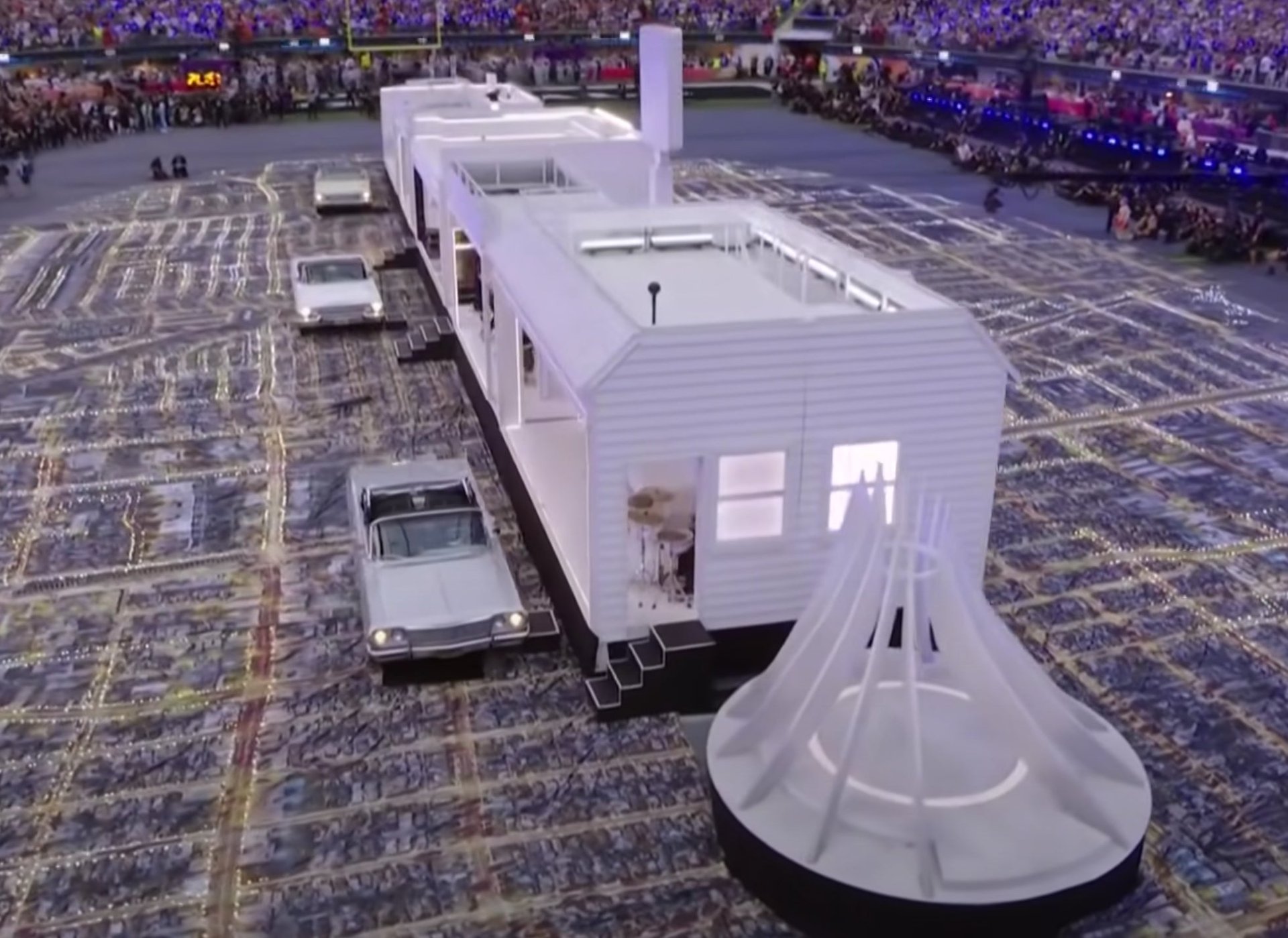
On the far side of the stage was a white sculpture with sweeping buttresses arranged in a circle. It’s a replica of the memorial to Dr. Martin Luther King Jr. in Compton’s Civic Center Plaza. The plaza, designed by Black architect Harold Williams, was built in the 1970s at the height of Compton’s identity as a majority-Black city when 65% of residents were Black. The demographics of the city have since changed to become majority-Latino.
Compton’s Martin Luther King memorial is reminiscent of the physical homages to the civil rights leader found in cities across the US. There are more nearly 1000 MLK boulevards in the US, almost all in majority-Black neighborhoods. Yet the economic justice King sought through the Civil Rights Movement—steady, dignified jobs with livable wages for all Americans—has not been fulfilled. Many of these streets are some of the most impoverished in the country: a 2020 study found that poverty rates in the areas surrounding MLK boulevards are nearly double the US average.
Tam’s Burgers
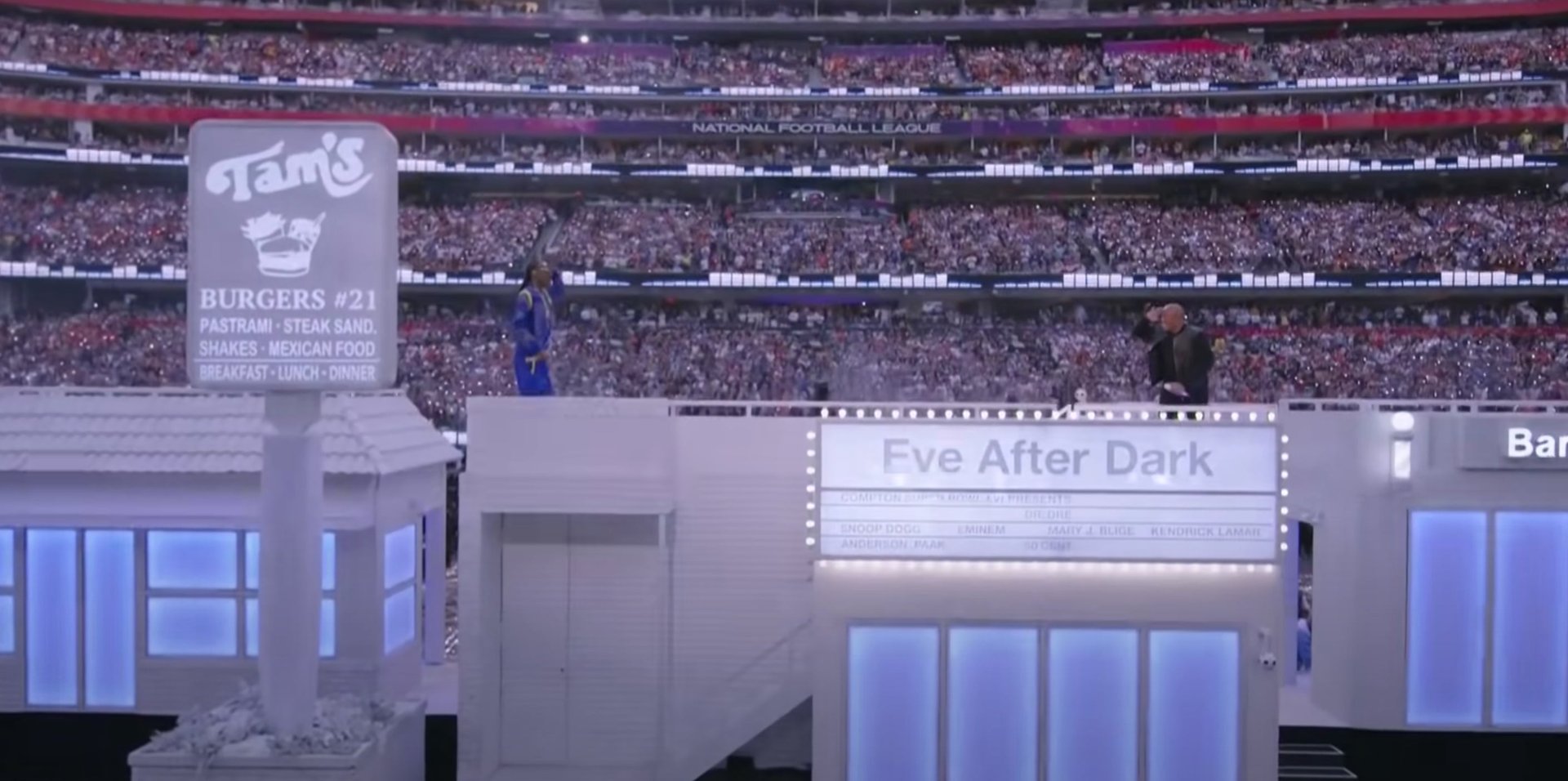
Iconic neighborhood landmarks such as the sign for Tam’s Burgers No. 21, and Dale’s Donuts, dotted the stage. Over time, these restaurants have become more than just favorite places to eat but also serve as cultural institutions and community meeting places. Kendrick Lamar, one of the night’s performers who hails from Compton, has shouted out Tams several times in his music. In the song Element, Lamar says: “I be hangin’ out at Tam’s, I be on Stockton / I don’t do it for the ‘Gram, I do it for Compton.” In another song, he alludes to Tam’s as the place where he saw someone murdered.
It’s not a surprise that in the economically depleted Compton of Lamar’s youth, a fast food joint would be the place to hang. In her book Franchise: The Golden Arches in Black America, historian Marcia Chatelain traces the history of how McDonald’s and other fast-food chains came into Black communities in the decades after the civil rights movement and turned their franchise locations into business opportunities for entrepreneurs as well as community hubs in the absence of other social institutions like libraries, community centers, or youth programs. A local LA franchise like Tam’s was right at home in Compton.
A map of Compton itself
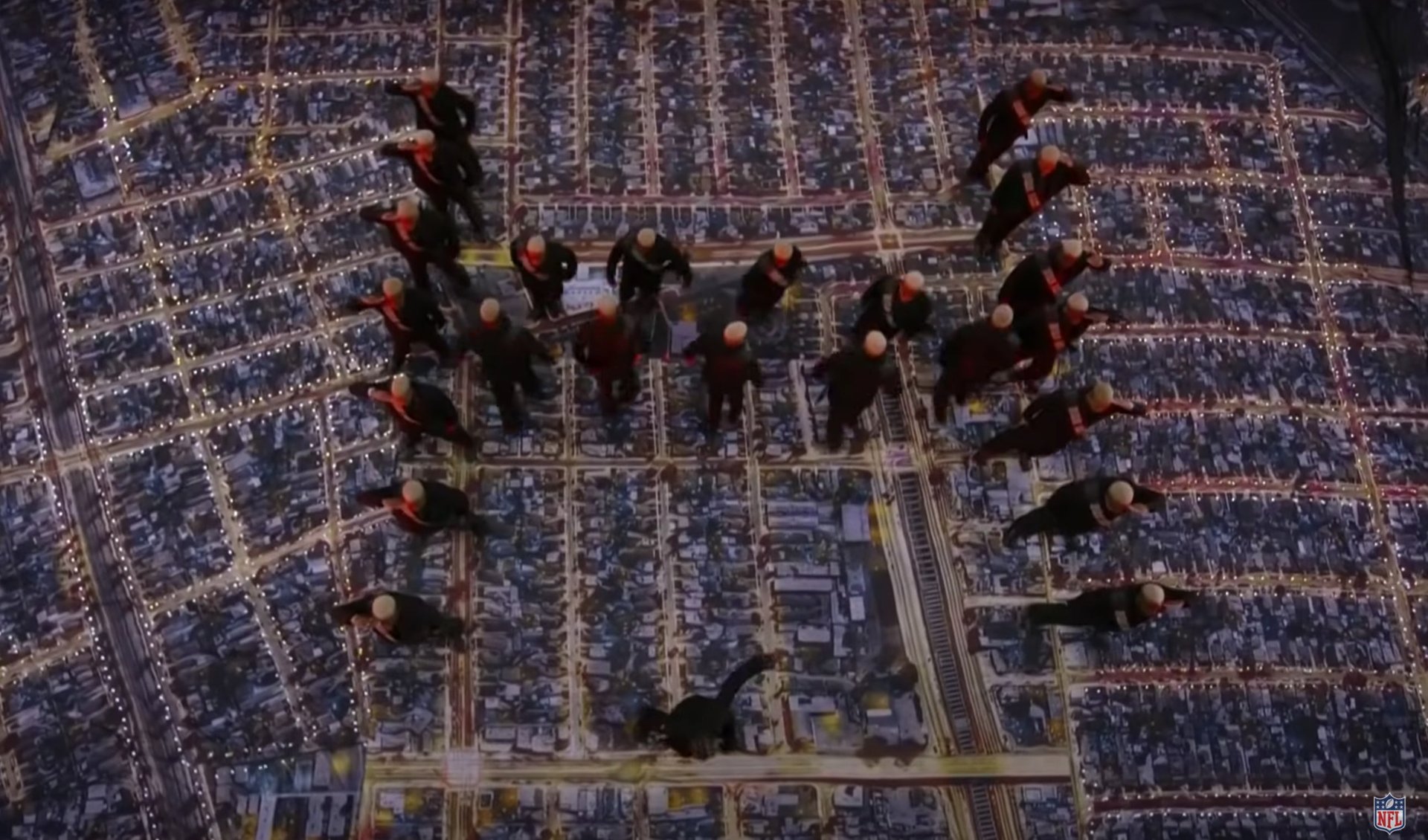
Compton’s biggest appearance was as the stage itself. Performers danced over map of the city covering nearly the entire football field. The aerial view of the city, streetlights and all, showed just how much life the 10 square miles of the city could contain— and the ways residents are hemmed in by their physical surroundings.
From this view it becomes clear just how much Compton, along with the rest of South LA is a concrete jungle. There are a few parks in town, but very little tree cover overall. (Compton has about 11% tree canopy cover, compared to 43% in wealthier Malibu.) This creates a heat island effect that makes these areas even hotter when the LA experiences high heat in the summer. Compton is also bounded by highways on two sides and sits near many of LA’s oil refineries. Thanks to emissions from these sources, Compton residents deal with some of the worst air quality in the state. These environmental impacts aren’t necessarily the defining elements of Compton that gave rise to Dr. Dre and his contemporaries, but they are a reminder of the fact that cities can nurture or stifle the people who live there.
For Dr. Dre, Kendrick Lamar, and others, coming “straight outta Compton” meant a life of struggles with structural racism and poverty, difficulties that inspired their music and reached millions of people. But for thousands of others in Compton today, where 20% of people live in poverty and median household incomes are around $53,000, structural obstacles remain.